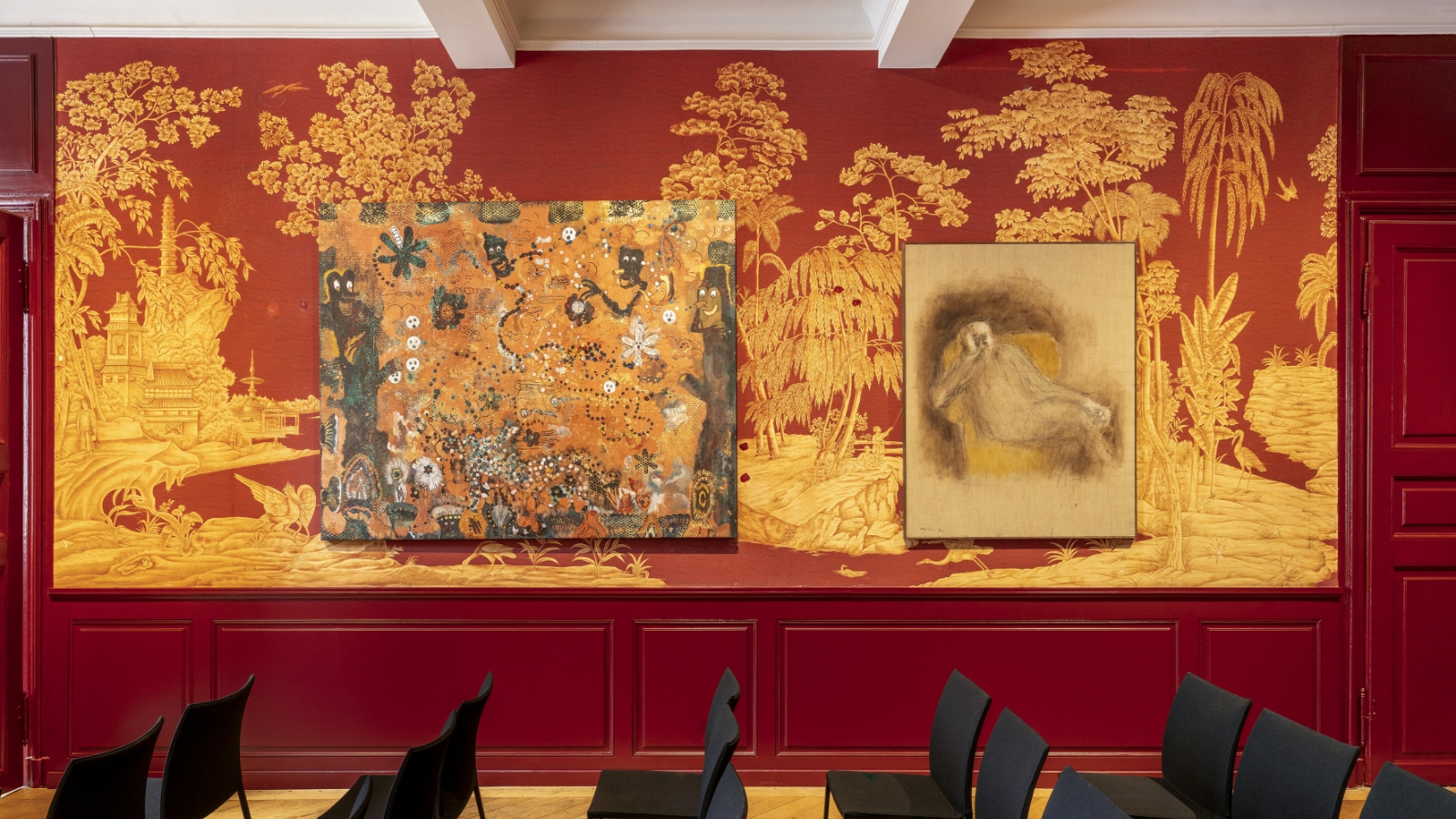
HÉLÈNE DELPRAT - 2018
Silly Symphony
ASIAN SALON
Born in 1957, France. She lives and works in Paris, France.
Over the past four decades, French artist Hélène Delprat’s multifaceted practice has engaged the human condition as its focus, exploring life and death in an oeuvre that includes painting, drawing, photography, sculpture, video, theater, interview projects and installations. Oscillatingbetween fiction and documentary, humor and melancholy, Delprat’s works together comprise a sprawling constellation of references to literature, film, radio, philosophy, internet databases, recorded national histories and canonical art history. Likened to an iconologist, she distils eclecticsources of inspiration into a miraculous inventory a world both fortuitous and deliberate, beautiful and grotesque, where themes of memory, identity, recording and legacy coalesce to remind us that the past is a construction and the present is fleeting.
She graduated from the Ecole Nationale Superieure des Beaux-Arts. Between 1982 and 1984, she was a resident of the prestigious Villa Medici in Rome, where she presented the anonymous exhibition ‘Jungles et Loups.’
Returning to Paris, Delprat exhibited with Galerie Maeght for ten years from 1985, coming to prominence with her totemic, primitive style of figuration, seen in such early works as ‘Meurtre réversible (recto)’ (1983) and ‘La transe des guerriers loups’ (1983). After giving up galleryrepresentation in 1995, she declared herself an ‘ex-French painter’ in the early 2000s, creating small gouaches containing the words ‘Where is the painting? (WITP) It must be this Way’ or ‘Another failure, How not to paint by painting?’. These works would signal the beginning of a journey to explore everything that is not painting, without ever relinquishing her practice.
In the subsequent years, Delprat devoted herself to work in video, theatre, installations and creations for radio. Immersing herself in literary, filmicand documentary sources, the artist focused upon non-painterly mediums which reflected the plurality of forms her extensive research could take—a diversity that extended to her ‘Days’ blog, fake interviews and radio drawings. Video works such as ‘Les (fausses) conférences’ (2011) offer up an array references, from astronaut Buzz Aldrin to the Greek writer Lucian of Samosata, interspersed with self-conducted interviews. Less filmic isDelprat’s ‘W.O.R.K.S & D.A.Y.S’ (2005), a visual journal or, as the artist describes it, ‘a notebook,’ citing influences as broad as Ovid’sMetamorphoses and the writings of Pliny the Elder.
Delprat’s sojourns into the unknown via deep research would eventually inform her return to painting in the late 2000s. Her artistic output has remained rooted in her infinite curiosity and penchant for gathering information from the world before and around her: ‘Intellectually, I start fromeverything I see’ she says, ‘... there is no prep work, except all of this food, all this reading, all these curiosities, all the photos that I take.’ The figures in her recent paintings, whether animal or human, are suspended upon hazy, multi-colored backgrounds, sometimes flecked with gold or intricate patterns. They exist in dream-like compositions evocative of the way memories appear and dissolve and reconfigure with their ownillogical logic.
Creating a space where fiction and documentary intermingle, Delprat’s multi-layered paintings are placed in an anachronistic framework. Her elusive characters and objects eschew context, resisting a single organized narrative. In paintings such as ‘Cymbalum Mundi-Pamphagus’ (2013), Delprat depicts Pamphagus, a dog from the 16th-century French text Cymbalum Mundi, as a well-groomed, contemporary French poodle. Otherpaintings take on a more ambivalent or disturbing aspect as Delprat addresses violent parts of human history. ‘Peinture ayant été détruite par Göring en 1937 et reconstituée en 2016’ (2016) summons tragedy and death through silhouettes of Nazi soldiers juxtaposed with floating cartoon faces that frown and smile. Similarly, the recent canvas ‘La décomposition de nos ennemis’ (2020) evokes images of war, a recurring theme in Delprat’s work and a metaphor for the act of painting as a battle against time.
In addition to Delprat’s first notable solo exhibition, ‘Jungles et Loups,’ at the Villa Medici in 1984, her work has been the subject of many solo exhibitions, including Galerie Christophe Gaillard, Paris (2014, 2017, 2020); La Maison Rouge, Paris (2017); Musée des Beaux Arts de Caen (2018); Kunsthalle Giessen, Germany (2020); Musée Marmottan Monet, Paris (2022); Museu Picasso, Barcelona (2023). In 2021, Delprat’s work was part of a group presentation ‘Sans titre’ from the Pinault Collection at the Punta Della Dogana in Venice, Italy. In 2021, the artist was commissioned tocreate the outdoor fountain ‘Marcello Dove Sei’ at La Residence – Le Tremblay, located in the town of Orgeres, France.




